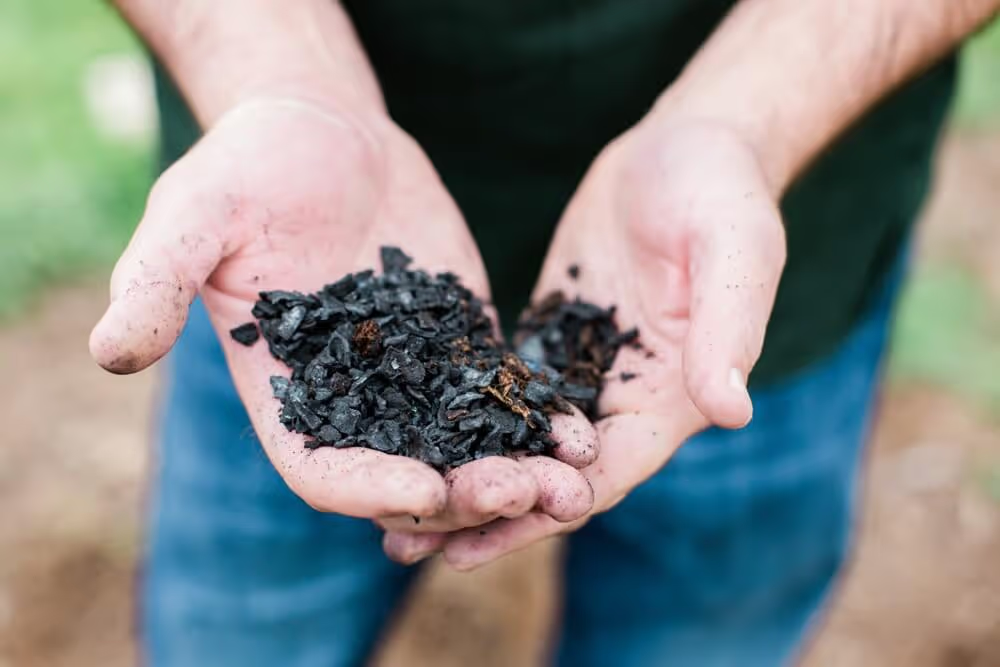Much of today’s public discourse about climate science is focused on lowering carbon emissions—that is, reducing the amount of carbon dioxide (CO2) civilization produces on an annual basis. Because greenhouse gases like CO2, nitrous oxide, and methane absorb thermal energy, as levels of these atmospheric greenhouse gases rise, so does the global temperature.
Carbon dioxide alone is responsible for 66% of that rise in temperature. We measure humanity’s contribution to rising global CO2 levels in parts per million (ppm), or how many parts out of every million parts of air in the atmosphere are CO2. The carbon dioxide that’s already in our atmosphere totaled 413 ppm in November 2020. In 1958, when scientists began measuring atmospheric carbon dioxide levels consistently, that number was 316 ppm. When it passed 400 in 2016, scientists sounded the alarm, estimating that a global increase in temperature of just 1.5 degrees would threaten global food and water supplies as well as expose millions worldwide to natural disasters.
To avert the dire consequences of global warming, climate stakeholders must work to not only limit our carbon dioxide production, but also to extract some of the existing CO2 from the air. Biochar, a charcoal-like substance made by heating organic matter, could hold the key to removing large amounts of CO2 while also offering a host of other benefits: it also reduces nitrous oxide emissions in soil, improves soil health, and is a vector for clean energy production.
Experts like Johannes Lehmann, an agriculture professor at Cornell, see biochar as a potential multi-pronged weapon against climate change. He estimates that adding biochar to just 10 percent of cropland worldwide could store 29 billion tons of CO2, which is about equal to our global annual greenhouse gas emissions. If that’s true, this technology offers hope for reversing the worst potential outcomes of climate change.
What is biochar?
Biochar is a black, fine-grain, porous substance that contains stable carbon. It looks a lot like its cousin, charcoal, and in fact they are produced in much the same way: by heating organic matter until its chemical composition changes. Charcoal is usually made from wood, while biochar is created from agricultural waste like corn husks, stems, leaves, etc.
Biochar production is promising because it captures the CO2 absorbed by plants and, by baking it down into a substance that can be added to the soil, sequesters that CO2 rather than releasing it back out into the environment during decomposition.
How is biochar made?
Biochar is produced via pyrolysis, or the process of heating organic material in a controlled, limited-oxygen environment. The most effective methods of pyrolysis also harness the heat that’s created to use as clean energy.
There are multiple methods of producing biochar, but the principle behind production is consistent: crops absorb carbon dioxide, then become waste which can be used as feedstock. The feedstock undergoes pyrolysis, and then becomes carbon biochar. The biochar is reused or stored.

Biochar production always follows the basic steps outlined above, but it can look different at scale. For Ecoera, a company that makes and stores biochar, the process works like this:
- Biowaste and residue streams from a variety of sources including urban and agricultural environments are collected and pelletized if needed.
- Pellets undergo pyrolysis inside a specialized pyrolysis plant.
- The plant creates two products: one is the biochar carbon. The other is excess heat, which gets funneled into a district heating system—in other words, central heat for a commercial or residential building via pipes in the ground.
- Biochar carbon is then:
- Added to agricultural soil for amendment
- Used to create green infrastructure for cities
- Added to cattle feed
- Recycled into roofing material.
Where the biomass feedstock comes from matters. Some types of renewable energy, like biofuel (fuel made from feedstock rather than fossil fuels), are created using bioenergy crops, which are grown specifically for the purpose of being converted into energy. To make the creation of biochar as efficient as possible, it’s recommended that biochar is created from crop waste, organic material that’s already found in agricultural environments and would otherwise be left to decompose and contribute to agricultural greenhouse gas emissions.
How does biochar remove CO2 from the atmosphere?
When crop waste decomposes, it releases carbon dioxide (as well as nitrous oxide) into the atmosphere. Creating biochar from crop waste through pyrolysis prevents those gases from escaping during decomposition and instead traps them within the biochar.
By using pyrolysis to dispose of the waste rather than leaving it to decompose, the biochar process prevents the creation of new carbon dioxide in the atmosphere. But additionally, because the crop waste used to be living plants, it removed carbon dioxide from the atmosphere in the first place during photosynthesis. So not only is CO2 being removed, it’s also being stored away for potentially hundreds of years in the soil, making the entire process carbon negative—meaning more carbon dioxide is removed from the atmosphere than added.
This might seem like a futuristic technology, but it’s actually derived from an ancient Amazonian practice. Indigenous people in the Amazon rainforest have been creating terra preta (meaning “dark earth” in Portuguese) for thousands of years via a similar process. That soil is famous for being ultra-rich and containing carbon that’s been there for hundreds of years. Industrialization has disrupted the global soil balance, and restoring it is a promising route to fighting climate change on a large scale.
Biochar co-benefits
In addition to removing carbon from the atmosphere, biochar production has an array of co-benefits.
Soil amendment
All soil contains carbon. When plants photosynthesize carbon dioxide, they deposit the carbon compounds they don’t use for growth in the soil. Carbon helps soil absorb moisture and resist drought, in turn helping plants grow.
When we erode, over-farm, or over-fertilize soil, the carbon in the soil oxidizes, entering the atmosphere and depleting the soil. Because of its nutrient density and ability to help soil trap moisture, biochar can be an important agent of soil amendment, the process of improving soil that has become stripped of its nutrients from overuse.
Using biochar to store carbon in the soil, therefore, helps fight climate change on multiple fronts. If the soil is healthier, crops will grow more efficiently, which also helps cut down on agricultural emissions overall.
Reduces nitrous oxide, too
Biochar also changes soil’s chemical composition and activity of microorganisms in such a way that it reduces the soil’s nitrous oxide emissions by up to 55 percent, according to scientists at Cornell. This team of scientists also asserts that nitrous oxide has 298 times more potential to warm the planet than carbon dioxide. Nitrous oxide is a major player in developed countries’ agricultural programs. About 60 percent of all nitrous oxide is emitted by agriculture, and half of agricultural greenhouse gas emissions are nitrous oxide.
Biochar risks
Attention should be paid to social and environmental factors
Because of biochar’s potential to process vast quantities of biowaste and in return sink large quantities of carbon, it’s important to assess the risks of each system to ensure it will not disrupt the social or environmental equilibrium in any given area. Repurposing land that was previously being used commercially or agriculturally could displace workers and food supplies, or affect their cost and methods of production. Similarly, disruptions to ecosystems such as introducing new or more frequently occurring fauna could have an impact on wildlife. That’s why biochar planning, policy, and careful implementation would be crucial to the technology’s success.
Unknown side effects
As with any new technology, the full scope of potential side effects of biochar production is not yet known. Many experts recommend doing more research to avoid adverse and unforeseen side effects of carbon sequestration at scale. For example, until recently, oceans were our best known carbon sequestration option, but the process has proven to be harmful to ocean life and ultimately creates warm water that contributes to sea level rise. Recent studies have also explored the potential impact of biochar dust inhalation on human health.
Despite the potential challenges, environmentalists remain optimistic about biochar’s potential to reduce carbon dioxide and nitrous oxide emissions at scale, produce clean energy, with co-benefits for farmers around the world.





